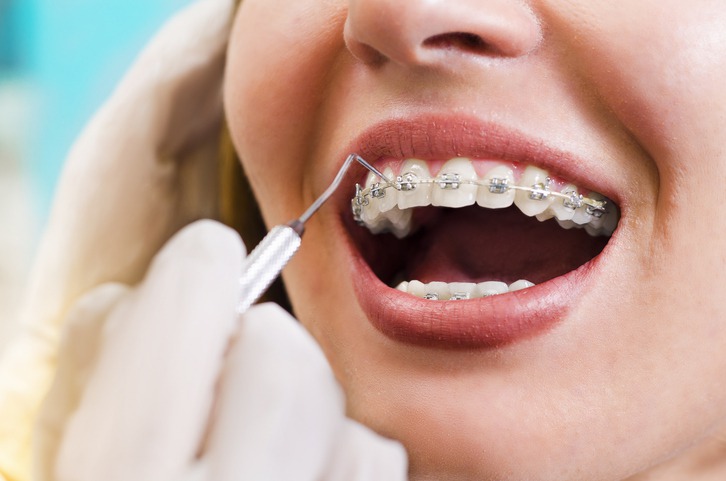Your first orthodontist visit can be a bit nerve-wracking, especially if you don’t know what to expect. Knowing what happens during this appointment can help ease any anxiety and make you feel more prepared. This article will walk you through what you can expect from a first visit to an orthodontist, helping you understand the process and what you might experience.
1. Initial Consultation
Scheduling the Appointment
The first step is usually scheduling an appointment. You can often do this over the phone or online. The clinic staff will ask for basic information, such as your contact details and dental history.
If you’ve decided to go with a trusted local orthodontist, you might be wondering how to find them. To make things easier, you can locate Dr. Washington’s Orthodontics on Google Maps. This can provide you with directions, reviews, contact information, and operational hours, making it convenient to schedule your visit and plan your journey.
What to Bring
-
Past dental records
-
Insurance information
-
A list of any medications you’re currently taking
Introduction and Discussion
When you first arrive, you’ll likely be greeted by the receptionist. After checking in, you’ll wait for a short period before being called in by the orthodontist or one of their assistants. The initial conversation will cover your dental health, reasons for visiting, and any concerns you may have about your teeth and jaw alignment.
2. Examination and Diagnosis
Comprehensive Oral Exam
The next step in your orthodontic journey is the comprehensive oral exam. During this examination, the orthodontist will assess the overall condition of your teeth, gums, and jaw. This thorough evaluation helps the orthodontist understand your dental health and identify any issues that may require treatment. Specifically, they will be on the lookout for:
-
Misalignments: Teeth that are not in the correct position.
-
Crowding: Lack of space causing teeth to overlap.
-
Gaps: Spaces between teeth where they should be touching.
-
Bite Issues: Problems with how the upper and lower teeth come together, such as overbite, underbite, crossbite, or open bite.
Diagnostic Records
To obtain a more detailed understanding of your dental structure and health, the orthodontist may collect diagnostic records. These records are crucial for developing an effective treatment plan and may include:
-
Dental X-rays: These images provide a clear view of the position and health of your teeth and underlying bone structures. They can reveal issues not visible during the visual exam, such as impacted teeth or bone abnormalities.
-
Photographs: Images of your face, teeth, and mouth are taken to document your dental health. These photographs help plan and track the progress of your treatment.
-
Impressions: Molds of your teeth are created to capture your teeth’ exact shape and alignment. These impressions are used to fabricate dental models, which aid in the precise planning of your orthodontic treatment.
To receive top-notch South Carolina orthodontic care, you can ask for recommendations from family and friends in that area.
3. Treatment Plan
Review of Findings
After collecting and analyzing all diagnostic information, the orthodontist will review their findings with you. This review includes a detailed discussion of the condition of your teeth, gums, and jaw, as well as any specific issues that need to be addressed. This conversation is crucial for:
-
Understanding the Scope of Treatment: The orthodontist will explain the nature and extent of your dental issues.
-
Discussing Potential Treatment Options: You will learn about various methods available to correct your dental problems.
-
Addressing Questions and Concerns: This is an opportunity for you to ask any questions and clarify doubts regarding the treatment process.
Treatment Options
The orthodontist will present a range of treatment options tailored to your specific needs. Common orthodontic treatments include:
-
Braces: These are traditional metal or ceramic brackets attached to the teeth. They gradually move teeth into their correct positions over time.
-
Invisalign: Clear, removable aligners that are less noticeable than traditional braces. They offer a more discreet option for straightening teeth.
-
Retainers: Devices used to maintain teeth positioning after braces are removed, ensuring that teeth do not shift back to their original positions.
Cost and Duration
The orthodontist will provide detailed information about the cost and duration of your proposed treatment. This discussion will cover:
-
Cost: Orthodontic treatments can vary significantly in price depending on the complexity of the case, the type of treatment chosen, and the duration of the treatment. The orthodontist will give you an estimate of the total cost, including any payment plans or financing options available.
-
Duration: The length of time required for the treatment to achieve the desired results. This can range from several months to a few years, depending on the specific needs of your case and the treatment method chosen.
Having a clear understanding of the cost and duration is essential for planning and ensuring that the treatment fits within your budget and timeline. This transparency helps you make an informed decision about proceeding with the recommended orthodontic care.
4. What to Ask Your Orthodontist
Important Questions
Before concluding your visit, ask any questions that you might have. Some important questions include:
-
What are the benefits and risks of my recommended treatment?
-
How will the treatment affect my daily life?
-
What are my alternatives if I don’t want braces or aligners?
-
How often will I need to come in for adjustments?
These questions can help you feel more comfortable and informed about the next steps in your orthodontic journey.
5. After Your Initial Visit
Scheduling Follow-Up Appointments
Once your initial visit is completed, the next steps involve scheduling follow-up appointments. These visits are essential for monitoring your progress and making any necessary adjustments to your treatment plan.
Maintaining Oral Hygiene
Good oral hygiene is critical during orthodontic treatment. You’ll likely receive specific guidelines from your orthodontist, but general tips include:
-
Brushing after every meal
-
Using fluoride toothpaste
-
Flossing regularly
-
Using mouthwash to kill bacteria
Final Thoughts
Anticipating your first orthodontist visit can seem daunting, but understanding the process can go a long way in easing your concerns. Preparing ahead, asking the right questions, and knowing what to expect will help you feel more confident and ready to start on your journey to a healthier, more beautiful smile. Taking the first step is essential for better oral health and well-being.



